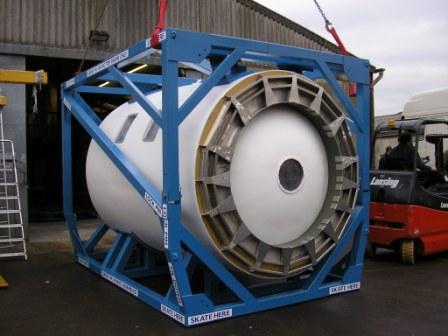Details have emerged of the UK's first commercially designed and built manned capsule that was delivered in 2005 to US customer Space Exploration Technologies (SpaceX), but did not fly. SpaceX had planned to launch a production version on its Falcon 5 rocket.
|
|---|
Above: The Magic Dragon capsule before its shipment to SpaceX |
Each of the capsule's five seats had a touchscreen laptop computer and supported the body and calf muscles during lift-off, with foot rests designed to fold away after launch. In its cargo version, without seats, it was to have carried three ISS pallet racks.
|
|---|
The interior of the Magic Dragon capsule |
SpaceX had specified a powered descent that did not use parachutes. The propulsion unit was also to have acted as a launch abort system during a rocket malfunction. The combined heatshield/propulsion unit was wider than the capsule for re-entry aerodynamics and atop this crew module, covering the CBM, was the Falcon 5's foldaway nose cone.
Elson, who has built pressurised capsules for high-altitude balloons, says there was originally a three-man capsule, but SpaceX chief executive Elon Musk decided "in October or September 2004 he wanted a five-person capsule".
The US government's International Traffic in Arms Regulations issues caused difficulties for Elson. He was unable to obtain details of the CBM or even basic Falcon 5 dimensions from SpaceX, a situation complicated by a lack of information about the combined heatshield/propulsion unit Elson was not designing.
SpaceX's next launch of its Falcon 1 rocket with its new Merlin 1C first-stage engine is scheduled for June from the company's central Pacific Marshall islands' Kwajalein Atoll launch site. The payload will be for the US Department of Defense's operationally responsive space office. This third flight of the Falcon 1 was to have taken place earlier this year.
Source: Flight International

























